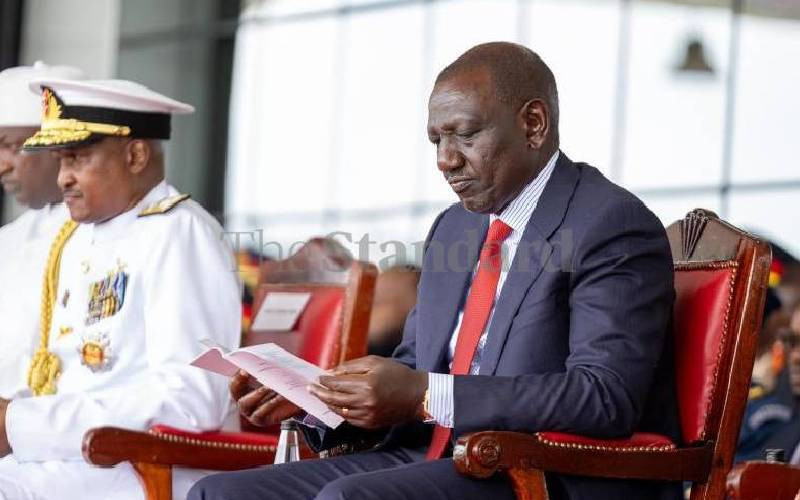By Priscilla Nyokabi and Audrey Wabwire
As elections draw nearer, emotions are heating up as aspirants are using all manner of tactics to seek political support. Anything catchy is welcome.
Recently, we discussed the peculiar names that political parties have – names not based on ideology, but focused on catchy phrases that can be chanted. If anyone is hoping that these names would at least be backed by symbols that speak on the party’s belief, then prepare for disappointment.
The same political parties move a step further to insult our intelligence. Rather than focus on building a party that can communicate through various media, leaders rush to register parties, putting little effort on details such as symbols. If one cannot follow through a simple stage such as this, how do they expect to represent Kenya appropriately to the international community without making us look absurd?
Political party symbols are vital. They are a critical part of the design of the ballot paper. The coming elections require strict planning in logistics as many leaders will be elected in one day. Therefore, it is wise to consider that the actual symbol can influence the success of a party.
In Uganda, there have been cases where party leaders have threatened dissidents that they would not be allowed to use the party symbol. This threat holds water because we are aware of the low literacy levels in our part of the world, especially in rural areas. Here, symbols closely guide the voting process.
Still in Uganda, last year we monitored an exchange between President Museveni and the Kabaka over a party symbol – a key. Both claimed this symbol belonged to them in some way. The Kabaka used the key to launch a festival, but others read this as a political statement because one opposition party uses the key as its symbol. Museveni felt this kingdom was throwing its weight behind the opposition.
Symbols communicate with immediacy. When used repeatedly, they leave a mark in our minds, which is why use of symbols has to be carefully developed. The Narc coalition came into power using a rainbow — signifying their unity. Albeit this unity was short-lived, they rode on the spirit of unity which society already associates the rainbow with.
However, if you name your party after a fruit, thus your party symbol will be. Fruits are an important food group and can be used for symbolism in other cases. However, politics ties better with governance and social welfare of the populace, which a fruit cannot communicate.
The image of a mobile phone does not signify any stand. If, on Election Day, a voter is confronted with a fruit, a mobile phone, a lantern – what reason have they to feel hopeful?
The significance of symbols in the West is not high, but there are examples we can borrow from. The Conservative Party in the UK shows how symbols in parties are used to support the stand of the outfit. After three election losses between 1997 and 2005, David Cameron became leader of the party in 2005.
He announced his intention to realign the Conservatives, moving them from a right-wing platform to a centre-right stance. This new ‘caring Conservative party’ tried to convince voters it cared about the environment so the symbol was changed from a torch to a Green Oak tree.
An Oak, symbolising British heritage and green, new found concern for the environment.
A rose flower is significant in the world of romance, but in our local societies, how much weight does this flower have? Or the cup representing Ford People? How about the Progressive Party of Kenya, which identifies itself using spectacles? Another party uses an image of a child being held up to represent its agenda yet it is the Party of Independent Candidates. Are independent people carried like children? In a country with 46 per cent wananchi living below the poverty line, why can’t parties use symbols that inspire change of situation?
Leaders must think through these images. Your party’s manifesto, beliefs and strategies, can easily be communicated through a single image, which must be striking but simple, informative but subtle. Achieving this balance is not easy, as we have seen. We have to remember that the international community is watching us.
Stay informed. Subscribe to our newsletter
Kenyans need hope in the democratic process. If you can communicate that, you are a step ahead of the person using a lantern to signify illumination when we are seeking rural electrification and solar power energy. As parties register and comply with the Political Parties Act, let us see innovation in the choice of relevant party symbols that Kenyans will resonate with.
The writers work for Kitui cha Sheria
 The Standard Group Plc is a
multi-media organization with investments in media platforms spanning newspaper
print operations, television, radio broadcasting, digital and online services. The
Standard Group is recognized as a leading multi-media house in Kenya with a key
influence in matters of national and international interest.
The Standard Group Plc is a
multi-media organization with investments in media platforms spanning newspaper
print operations, television, radio broadcasting, digital and online services. The
Standard Group is recognized as a leading multi-media house in Kenya with a key
influence in matters of national and international interest.
 The Standard Group Plc is a
multi-media organization with investments in media platforms spanning newspaper
print operations, television, radio broadcasting, digital and online services. The
Standard Group is recognized as a leading multi-media house in Kenya with a key
influence in matters of national and international interest.
The Standard Group Plc is a
multi-media organization with investments in media platforms spanning newspaper
print operations, television, radio broadcasting, digital and online services. The
Standard Group is recognized as a leading multi-media house in Kenya with a key
influence in matters of national and international interest.





